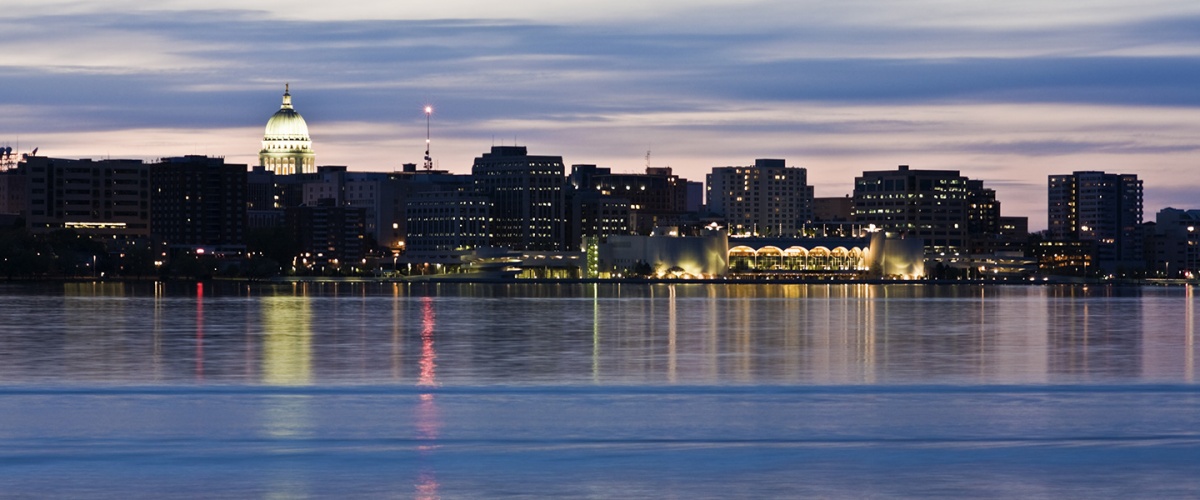Cities and Mayors at COP28
postedLast week, I traveled to the 28th annual United Nations “Conference of the Parties” negotiations on climate commitments, more commonly described as COP28. Held in a different location each year, COP meetings are the international forums where nations have made commitments to reduce climate pollution and help mitigate the impacts of climate change. For example, the Paris Agreement – the binding international treaty that 196 nations signed to reduce global climate pollution in 2015 – was a major outcome of COP21.
The Importance of Cities at COP28
If COP meetings are negotiations between nations, why were cities like Madison represented there?

The answer is that, for the first time ever, COP28 formally invited cities to participate in recognition of their importance to meeting global climate commitments. Globally, around 70% of climate pollution comes from cities. But equally important is that cities are hotbeds of innovation, and city leaders have been committed to and aggressively pursuing climate solutions for a long time. City leaders were officially recognized this year at COP28 as key players in achieving climate solutions – if they are sufficiently supported to do so. Mayors were invited to this year’s COP to speak to kinds of support they need to implement their climate plans. I was invited to attend both as Mayor of Madison and as Chair of Climate Mayors, a role that allows me to voice the needs of and opportunities for cities across the United States that care about reducing the harmful impacts of climate change.

The U.S. has committed to reduce climate pollution to 50% below 2005 levels by 2030. To help achieve that, the Biden Administration’s Inflation Reduction Act (IRA) has committed nearly $400 billion to climate action. Studies indicate that the full implementation of the IRA will put the U.S. well on its way to achieving its goal, projecting it to reduce climate pollution by 40% or more by 2030. Two important points were made about this: (1) a lot of the implementation of the IRA will happen in cities, with local governments leading the work; and (2) this national commitment falls short of meeting the 50% reduction goal, and so the actions of other players – like cities – will be critical to meeting the remainder of the commitment.
Mayors from the United States shared examples of what national funding to cities can help achieve on the ground, including examples of how the IRA is helping. Representing Madison, I spoke about the federal funding that has helped us build an all-electric bus rapid transit system, provide energy retrofits in affordable apartment buildings, convert to electric vehicles, and more.
Mayors also talked about what they could do with more support, and where they still face barriers in achieving their goals. Some of the barriers cited globally rang true for us locally as well. Chiefly, lacking sufficient capacity to pursue funding opportunities, insufficient long-term sustained funding to solve complex problems, and a lack of local authority to pursue all climate actions. In Madison, for example, we know that buildings are the source of nearly half of local climate pollution, and we know the State energy code is less efficient than the current national standard. Yet cities in Wisconsin do not have the authority to adopt local energy codes that are more energy-efficient, which means we are constructing new buildings that use more energy than they need to, and thus create more climate pollution than they need to.

At COP28, I spoke to the opportunities, barriers, and needs I see for Madison in a number of forums and to numerous federal officials, major foundations, sustainable finance representatives, and others. I spoke about these topics as they relate to transportation, buildings, urban greenspace, environmental justice, use of IRA funding, and more. I met with high level U.S. officials including National Climate Advisor Ali Zaidi, U.S. Department of Transportation Under Secretary Carlos Monje, Administrator of the U.S. Agency for International Development, Samantha Power, U.S. Ambassador Nina Hachigian, and White House Deputy Chief of Staff John Podesta. I also attended a 2-day Local Climate Action Summit held as part of COP28.
Mayors also took to the main stage along with foreign ministers to talk collectively about the importance of national engagement with “subnational governments” like states and cities to achieving their national climate commitments. An early outcome of this new focus – and one with promise to grow in the future – was the launch of the Coalition for High Ambition Multi-Level Partnerships, or CHAMP. To date, over sixty countries, including the U.S., have signed onto CHAMP, pledging to enhance cooperation with their states, regions, provinces, and cities on climate action. While CHAMP is still in its early days, there was a lot of conversation about how to implement it and report back on progress in two years at COP30. I am hopeful that we will see new tools and new levels of cooperation with our federal government as a result.
The notion that cities are leading on climate action is not new, but the elevated focus on cities as key partners to meet national climate commitment is new, and promising.
This content is free for use with credit to the City of Madison Mayor's Office.
